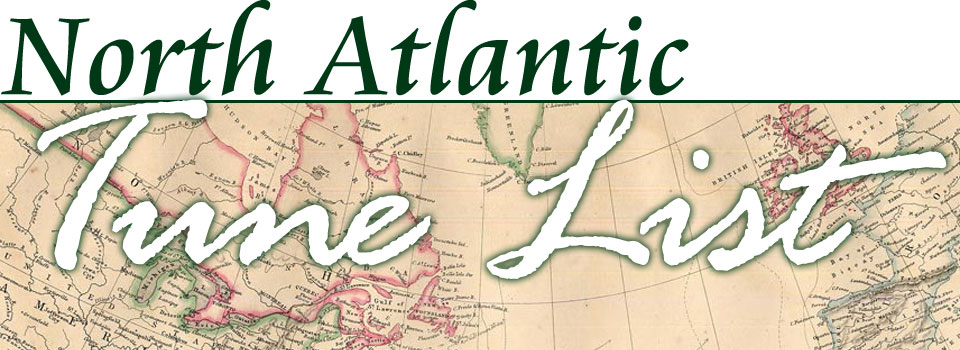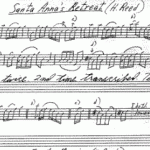Key: Amix
Form: March
MP3:
Download this MP3 If it plays, right-click on the page and “Save as”. (Detailed instructions)
ABC*:
X: 1 T: Santa Anna's Retreat R: reel M: 4/4 L: 1/8 K: Amix |"A"ABcd e2 a2| e2 a2 edef| "G"G4 B2 g2| M: 6/4 f2 g2 edBc d2 cd| M: 4/4 | "A"e2 a2 e2 a2| edef "G"gfga| b2 ef gfed|"Am"=c2 a2 a4 :| |:"A"e2a2a2a2|abag ed^cd|"G"edef gfgf|edBde2e2 | | "Am"ABAG EGAB| =c2 A2 e2 AB| "A"c2 cd edef| "G"g2 B2 "A"A4|]
Youtube:
Sheet Music: Click image to enlarge.
Source: Stephen Foster via Quince Dillon (? See Notes)
Other Tunes in Set:
Region: USA, Texas (Yeah, I know it’s a long way from the North Atlantic, but it’s a great tune anyway, with maybe a slight Irish connection. See Notes below)
*Notes:
Library of Congress listing: http://www.loc.gov/item/afcreed000114/
The ABC above is a bit different from what we’re familiar with, especially in the B part.
This tune’s lineage appears to be better documented that most old tunes. We learned it from Alan Jabbour** who learned it in 1966 from the elderly Henry Reed, who learned it as a young man from Quince Dillon who was present as Santa Ana’s Mexican army retreated from Texas and who he thought composed it.
There were Irish troops involved on both sides. Quince Dillon’s name sounds Irish although his family seems to have been in North America since before the American Revolution.
A Google search yielded this about the tune’s origin,
“The tune “Santa Anna’s Retreat” commemorates Santa Anna’s withdrawal from the town of Buena Vista during the Mexican-American War. Stephen Foster originally wrote the tune as a piano “quick step” to mark the engagement, calling it “Santa Anna’s Retreat from Buena Vista”. While it remained relatively obscure initially, it gained prominence when the Fuzzy Mountain String Band included it on an album in 1973. According to the Banjo Newsletter, the tune is believed to have been used by Santa Anna’s army to retreat from American forces.”
fave
From Dillon Music’s website:
Quince Dillon…was a fifer in both the Mexican War and American Civil War. Quince also was an accomplished fiddler. Quince’s unit, the 166th Virginia Militia, was eventually incorporated into the 59th Virginia Infantry, which along with other Confederate units, was captured at the Battle of Roanoke Island, North Carolina on February 8, 1862. As the story goes, the Yankee commander of the prison where Dillon was imprisoned held a fiddle contest. The prize was that the fiddler who played the best original composition would be set free. Quince Dillon played a song he composed on the spot and won the contest!
Elbert Ebb Dillon, Great-Great-Great Grandson of William, along with his brother John and Uncle Quince, helped to influence the Fiddling of Henry Reed, the renowned country fiddler.
Quoting Alan Jabbour: “Henry Reed learned this march from Quince Dillion of Monroe county WV who was both a fiddler and fifer. It is associated with the Mexican War in which Santa Anna was the commanding general of the Mexican army.”

